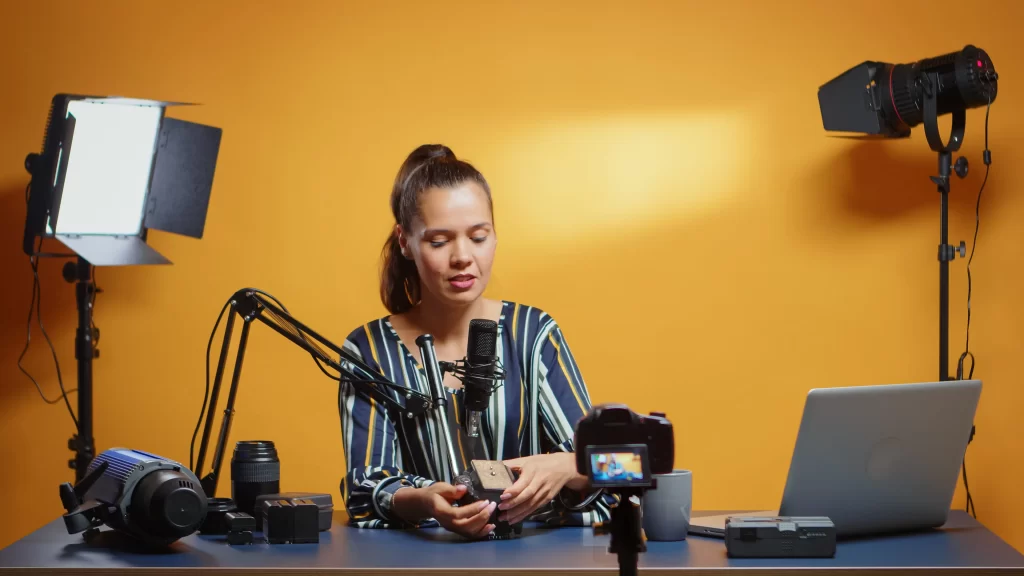Video Industry And Content Trends You Should Get Excited About In 2022

Over the last two years many of us have endured new experiences, some of them more enjoyable than others, and many of them are thanks to the COVID-19 pandemic. Terms like lockdown and vaccine passports have all entered our daily lexicon, and the way that we shop, travel, enjoy our time with friends and family and the way that we consume media has changed.
In 2021 the average American spent 80 minutes per day watching CTV content, an increase of nearly 9% compared with 2020, as mentioned in this eMarketer report, and even more growth is forecast for 2022. The market is growing and as it expands so too will the financial opportunities, with CTV accounting for 10% of tidal display programmatic spending in the US.
Where there is financial opportunity, innovation inevitably follows and the huge shift towards streaming over traditional TV means there are new opportunities for advertisers. Let’s take a look at some of the most exciting.
AVOD
AVOD, which stands for advertising video on demand, refers to streaming services that support their platform via advertising rather than subscription fees, which at one point would have been a very unfashionable choice, certainly not something in the future of digital video. Though streaming giants like Netflix, Amazon Prime and so on, occupy the main market positions, consumers are increasingly willing to accept ads if it saves them money and according to Leichtman Research Group, 54% of consumers agree with this sentiment.
With a market increasingly saturated with subscription costs, free-to-view alternatives like AVOD services are predicted to grow in popularity to become one of the major video content trends visible on CTV. Recent findings from video AdTech company Unruly shows that European TV viewers do not really want to pay more than $25 per month per subscription service, it’s clear that there is a significant opportunity in the market for video ad providers.
As mentioned by eMarketer, 2021 became the first year when AVOD viewers made up more than 50% of all digital video viewers in the US and AVOD viewership will keep expanding in the year to come because more media companies that own traditional TV networks are investing in streaming (e.g., NBCUniversal’s Peacock, Fox’s Tubi, ViacomCBS’s Pluto TV and Paramount+, WarnerMedia’s HBO Max, and Discovery’s Discovery+).
Cohorts
No, we’re not referring to the key component of a Roman legion (though that would be cool) but instead an alternative to cookies composed of variable units including households, regional locations, niche individual groups, the list goes on and on. Cohorts are being developed as an alternative video advertising solution to take the place of mobile ad identifiers, otherwise tracking user exposure would become very difficult without seriously violating the privacy of users, which is something that has become increasingly unacceptable in many countries, especially in the European Union.
They do not share user-level data, which complies with most international data protection standards, and when processed by a measurement partner with experience in analytics, they provide high-level actionable insights. All this makes cohorts an exciting factor when considering what will constitute the future of digital video and something that could dominate video trends in the coming years.
Immersive Ad Formats
The increase in accessibility to CTV has allowed advertisers to experiment with their content, and if one thing became apparent quickly across gaming consoles, smart TVs and more, it was that users responded well to in-depth content. Providing immersive interactive ads with a personalized structure, whether that be via video, gaming etc, will likely prove to be a winning idea for advertisers.
The key will be to deliver ad content that’s dynamic and able to adapt quickly to emerging trends that match the intended target’s key interests, and this will rely on high-quality data analysis to take advantage of key video trends as soon as they emerge. Advertisers also need to make sure they use information like geographic location, demographic background, income level, and other factors, when creating immersive ads for digital video content, as this will allow them to create the most in-depth advertising experience possible.
Sustainable and Socially Responsible Advertising
Never before has holding a sincere belief been more lucrative for marketers as the consumers of digital media trends increasingly demand that their favored companies take positions on the most important moral and ethical issues. According to a study by First Insight, up to 62% of millennials and Generation Zers prefer to buy from sustainable brands, and also demand awareness of social problems by promotions, charity work, corporate social responsibility, etc.
There is a temptation to tap into the latest video trends that refer to socially conscious issues, but companies should be careful, just latching on to a cause without fully appreciating its complexities for likes and shares could prove disastrous. Sustainable solutions are becoming part of the norm and more brands want to show people how their business is solving everyday sustainability problems. For example, Adidas’ with their popular Stan Smith shoes that are now made from recycled plastic, H&M with their recyclable packaging, or Dove offering refillable deodorants. In 2022 brands need to update their messaging and policies to show the actions they are taking and need to make sure that anything they support can be justified via two factors; Firstly that the company will be able to speak from a position of authority about it, and secondly, that it will be a profitable exercise for the business.
Multicultural Marketing
Appealing to new cultural areas has always been a good strategy for marketers to expand their brand, whether that be based on video advertising or something else, and while multicultural marketing is something of a buzz word it’s also a major video content trend. Advertisers start with one broad campaign designed to reach as large an audience as possible, then employ a variety of marketing tactics to create sub-campaigns to reach as diverse an audience as possible, all of which is well facilitated by CTV technology.
With increased demands for inclusivity and diversity in advertising campaigns, this strategy will continue while also being siloed to reach a number of niche audiences while also retaining the same broad strategy for video ads. This will rely on verified second and third-party data to identify the right audiences to build on, but when this is achieved the improved definitions will create considerable value for video advertising companies.
CTV-First Agencies
It took a while for much of the media industry to catch up with CTV’s explosive growth but it’s now a fully-fledged part of the industry landscape, and the market is responding by tapping into this major online video market trend by setting up agencies entirely focused on CTV. Recognizing that buying, targeting, and analyzing CTV-based content for advertising required a specialist approach, companies adopting this approach are likely to find themselves at the future of video advertising.
CTV first agencies need to combine the dynamic, granular nature of digital marketing with the ability of television-focused teams to provide a full storytelling experience, especially given the demand for personalized ad content. However, if they can achieve this, expect these kinds of companies to perform well as they maneuver themselves into a strong position in one of the most exciting positions possible for the video advertising industry.
Short Form Video Content
It’s probably not escaped everyone’s notice that Tik Tok is one of the most dominant social media platforms around these days and its undisputable influence as a video content trend has had a big impact on CTV and other forms of media. Millions of social media savvy individuals, especially those of Generation Z, now expect video advertising and related forms of content to be short, snappy, engaging, and multimedia in nature, all thanks to Tik Tok.
Marketers and advertisers who use short-form video content and combine it with immersive ads are particularly likely to experience success, the trick will be identifying their own niche or unique selling point. If they can work this out and create a recognizable brand story for their short-length content, they’ll do well, just don’t latch onto whatever’s hot in video trends for the sake of it, make sure it’s relevant to the brand’s identity.
Vlogs
It probably shouldn’t come as a surprise that blogging would feature in an article about the future of digital video and online video marketing trends, and a strong performance is expected in this area in 2022. Influencers on social media platforms like YouTube continue to hold dominance in the field of vlogging, but in the year to come more brands and businesses will emerge on other digital video platforms.
CTV offers a good avenue for brands’ vlogs to become successful as the ease with which audiences can consume video on demand means that brands can reach their audience in places that wouldn’t have been possible a mere decade ago. Among the most popular types of brand videos are behind-the-scenes content, brand story videos, tutorials and interviews. Implementing all of this into their marketing strategies in the year to come, brands are able to tell their story, offer value to their audience and deliver the messages which makes them unique. Branded content and messages will need to be original, as many businesses want to work with vlogging personalities and influencers, so count on this being a reliable key video trend next year.
Programmatic Audio
Yes, this doesn’t sound like it’s relevant to video advertising trends, but the explosion in popularity of podcasting over the last decade means that programmatic audio is now a lucrative field for advertisers who follow video trends. In 2021 in the United States, based on one Edison Research report, 193 million Americans over 12 years of age listened to online audio monthly, spending 16 hours a week on average listening.
Now consider the fact that many of these millions of Americans listen to their audio content not on audio-only platforms but on social media platforms that focus on video content, for example like YouTube. There is clear room for growth for video advertising companies in this sector and the public is much more receptive to new forms of media thanks to the lockdowns caused by the COVID-19 pandemic, so brands shouldn’t be afraid to include programmatic audio to their advertising strategies.
AI
Artificial intelligence, more commonly known as AI, is at the forefront of most current technologies so it should come as no surprise that we can expect it to feature prominently in the future of digital video and video advertising. Get ready for AI-powered features in the Connected TV industry, SEO, SMM, and other fields of digital marketing, that will allow video content producers to target exponentially more niche content and increase audience numbers as a result.
More and more companies will rely on AI tools to conduct business, forecast and make predictions. As an example, in the CTV industry AI tools are already able to analyze big amounts of data to produce precise forecasting for demand as well as improve the CTV advertising experience for viewers whilst also boosting performance for advertisers.
Takeaways
Next year is likely to be an exciting one for anyone working in advertising, video content creation, or indeed in CTV, so let’s look forward to a 2022 that is hopefully a lot brighter in many ways than the last year. Make sure your business stays on top of all the latest video trends and TheViewPoint will help to maximize the potential and support the implementation of the most daring ideas and experiments. Good luck and enjoy the new year!
START YOUR FREE TRIAL
All The TV You Love Over 18,000 Live Channels, +8,400 Series, And +60,000 Movies You Will Definitely Find The One You Love. Sports, News, Action, Kids, International, Local, HD, And UHD. Wide Variety Of Devices And Apps, AntiFreeze Technology, 24/7 Support To Help You With All Your Inquiries.

